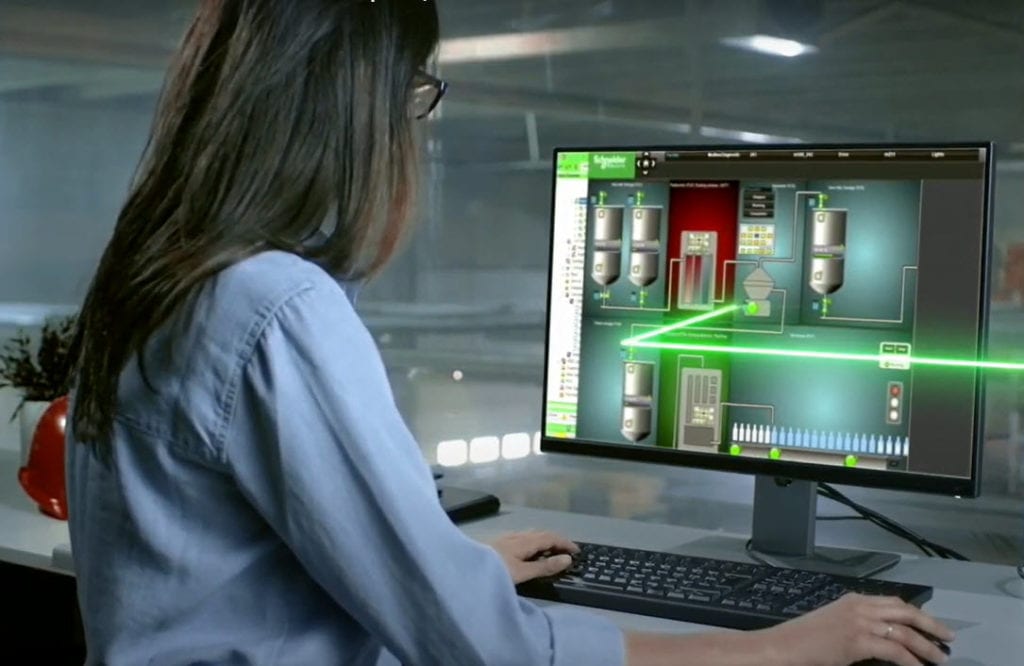 A Side-by-Side Comparison of Open vs Traditional Industrial Automation Systems Reveals Significant Differences
A Side-by-Side Comparison of Open vs Traditional Industrial Automation Systems Reveals Significant Differences
Until recently, industrial automation systems haven’t had a true option that allows for the easy unification and integration of disparate automation systems. Instead, stakeholders have come to accept closed architectures, solutions that are hardware dependent, and proprietary software that lacks easy portability. These systems are missing the automation efficiency needed to address the complex use cases required in today’s dynamic marketplaces. It’s time to release these constraints.
Across the domain of engineering design and operation optimization, concepts like the decoupling of hardware and software can deliver a major boom in productivity. More efficient engineering reduces CapEx, lowers OpEx, sparks innovation in greenfield environments, optimizes brownfield performance, allows for seamless upgrades, and even helps shorten manufacturing line turnarounds. In fact, plant efficiency starts from the way plant assets are engineered and then carries over to the way the plant is operated and maintained.
Efficient engineering also has a great impact on an engineer’s user experience, and engineering tools that easily interoperate to enable efficiency improvements. Plug and play connectivity allows for smooth integration of hardware and software and seamless automation, making easy system upgrade paths possible. These capabilities lead to lower asset Total Cost of Ownership (TCO).
An Industry Standard Plus Industry 4.0 Innovation Now Enable Automation Efficiency
The IEC 61499 International standard defines a system level design language for distributed information and control systems. It’s event driven object oriented approach enables portability, reusability, interoperability, and reconfiguration of applications, serving as a building block to enable software applications to be designed independently of the hardware platform. To learn more about how the IEC 61499 standard is liberating industrial automation, have a look at the blog here. In a move away from traditional, heavily engineered and closed systems, companies like Schneider Electric are using this standard to develop digitized open automation systems like the recently released EcoStruxure Automation Expert. This open approach, which is designed around a user experience driven system, has been tested in the field and has been found to generate 3 to 4X increases in engineering and operational efficiency gains when compared to standard proprietary systems.
Over a period of several weeks, the open EcoStruxure Automation Expert system was tested, side by side, with three leading marketplace proprietary automation vendor offers. To conduct unbiased field research, external contractors with significant automation project experience across specific vendor platforms were hired for the engineering comparison. Three tests, reflecting three important phases of the automation lifecycle– design and build, operate and maintain, and optimize and renew–were conducted. Listed below are some of the key findings:
- Design and build phase: new application creation – The asset centric and object-oriented nature of the open system helped process engineers to design the new production processes faster and to avoid tedious and error-prone automation by automatically generating the foundational code of the new application. As a result, these tasks were performed three times faster using the open system.
- Operate and maintain phase: Live system diagnostics – By providing a single and consistent diagnostic service for the entire multi-vendor system with contextual information, the open system helped maintenance engineers to fix problems, minimize downtime and drastically shorten time for root cause analysis. Overall, the open system demonstrated a 50% to 80% reduction in the time it took to perform diagnostics.
- Optimize and renew: Systems agility–In this phase, engineers performing the comparison were asked to change a controller from one unit to another and to assign a new controller to an asset. The hardware agnostic design of the open system enabled faster modifications, which, in real world scenarios, reflects an ability to address rapid changes in business needs. In fact, change-related tasks were executed at a rate 70% to 80% faster with the open system than when proprietary systems were used.
Throughout the testing and comparison period, it became evident that the EcoStruxure Automation Expert software presented advantages over the traditional systems in several ways:
- Driving to 100% Engineering Efficiency – Low- or no-value-added tasks were automated, eliminating duplication of efforts when moving from one engineering tool to another.
- Ready for 100% Operational Effectiveness – Engineers were provided with the tools they needed to maximize asset uptime and to optimize workforce efficiency.
- Now 100% Future Proof –The applications that the engineers worked on are now future proof. A wrap and reuse approach can be used to support current systems while allowing full application portability for future migrations.
To view more field study details and to discover how open automation approaches can help to shape your industrial automation future, download our new “A Quantitative Comparison of Digitized Industrial Automation Systems” white paper.



